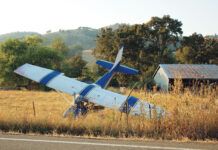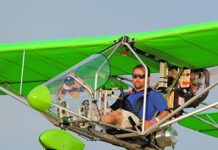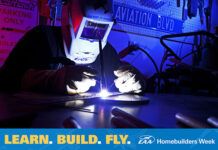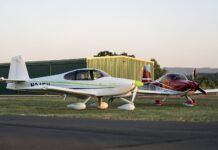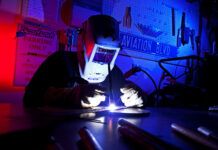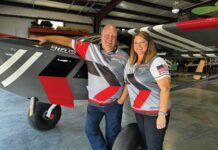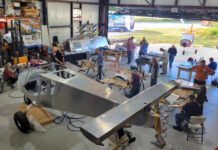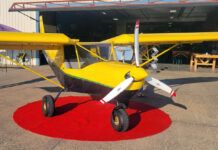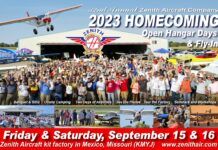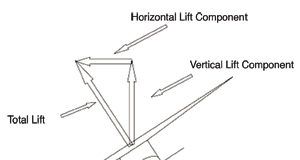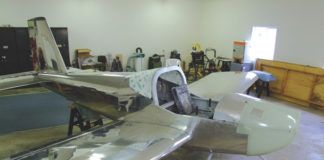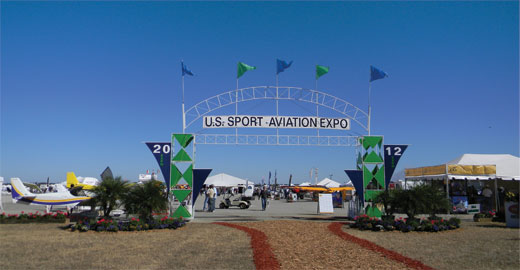
It’s been a few years since I last visited the U.S. Sport Aviation LSA show in Sebring, Florida. As our coverage of Light Sport aircraft here in KITPLANES® has subtly shifted over the years—at first we reviewed ready-to-fly designs as well as those intended to be assembled at home—the need to attend the event has waned. In the recent past, we put former KP Editor Dave Martin into an aluminum tube to go see the show; as our LSA go-to guy, he was able to chat up the manufacturers and get the scoop on what we might see at Sun ‘n Fun in the spring. (In case you’re unaware, few kit companies have dedicated press-relations machines. Unlike journalists in other special-interest fields, we get relatively little handed to us in a press release. It’s old-school journalism—a bit more work but also more rewarding.)
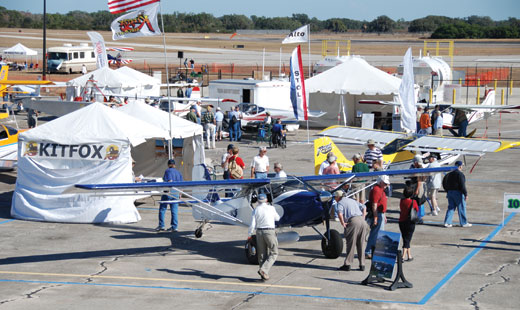
The Kitfox Aircraft booth had plenty of traffic. Two aircraft were staged so that one could be out on demonstration flights much of the time.
We took a flyer this year to see if we could get an early start on the airshow season, and with your editor breaking in a new art director, I got the call.
I’m going to take credit for changing the weather in Sebring. Last year, I’m told, Mother Nature wreaked havoc on the show, making it difficult for manufacturers to attend and tamping spectator numbers. This year was perfect. I landed in Tampa via a grubby Airbus to see a weak cold front blow through. By the first day of the event, the skies were clear, the temperature moderate, and the mood high. Few looked happier than the Zenith Aircraft crew, temporarily unlocked from the Missouri winter. (I expect a plaque or award from the Sebring Chamber of Commerce for my participation. Or something.)
Close, Never Far
Sebring is a small show. Event organizers claim there were approximately 16,000 spectators over four show days, causing Sebring Regional Airport Executive Director Mike Willingham to be “ecstatic.” You could do it in a day, day and a half, tops. When you compare Sebring—the term I’d prefer to use over the unwieldy U.S. Sport Aviation Expo—to Oshkosh, Sun ‘n Fun, or even Arlington, it’s compact, to be kind.
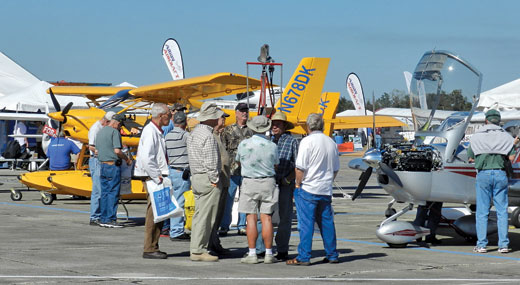
The Sebring flash mob. Well, not exactly. But the spectator turnout was good and the vendors happy with the January event.
But in that size you’ll find benefits. First, the show is designed to be demo-flight friendly. Several manufacturers had demo ships lined up at the southeastern corner of the show, where they could be taxied a short distance to the active runway. I watched Kitfox’s John McBean and Paul Leadabrand (owner of Stick & Rudder Aviation, which offers ab-initio and tailwheel training in a Kitfox SLSA) fly a bunch of demo flights during the event; every time I rounded the south end of the static display, one or the other of the two Kitfoxes was invariably starting up for a flight or just returning from one.
I had the opportunity to fly a RANS S-7LS at the show as well. (Look for a full flight report in an upcoming issue.) When I arrived at the RANS booth, I was concerned that the S7 was still tied down in front of the tent. Shouldn’t it be staged at the fly-out point? No problem. We untied it, walked it a few hundred feet to an opening in the show perimeter fence and were taxiing under power a few minutes later. We didn’t ask anyone’s permission. What a delight. I’ve come to dread doing flight demos at airshows because of the PITA factor; a 30-minute flight is usually 90 minutes end to end, sometimes more.
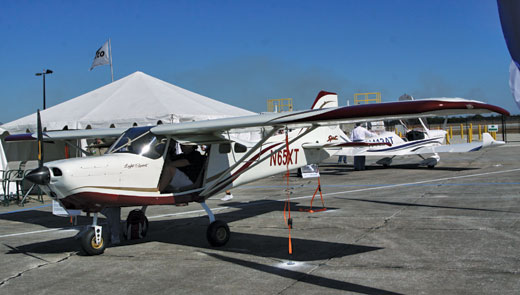
The Spirit ELSA was on display at Sebring. Built in Colombia from American raw materials, the airplane returns to the States for final assembly by the builder.
The Mood
I talked to most of the vendors—airframe, avionics and engine—and heard encouraging words. It seems that most feel the worst of the economic times are behind us, and that even with an overall economic recovery expected to be gradual (and probably a bit fragile), most of these companies have adapted. They’re running profitably—or close to being so—at the sales figures the current industry supports. Partly as the result of scaling back, several companies offering both kitbuilt and SLSA designs have had to juggle kit and airframe production to best fit demand, and even so, at least a couple of companies I talked to said they have significant waiting lists for ready-to-fly aircraft. What’s more, these two designs are at opposite ends of the price scale.
Better yet, a few of these companies are starting to look forward to funding development programs. A few of them are already there. I won’t spoil the surprise, but several airframers are preparing big announcements for Sun ‘n Fun. In a few cases, these are improvements to existing designs, but I know of two that are more like substantially reworked airplanes based on familiar bones. (The need to stay close to what you know, and what you can produce efficiently, is as important here as it is for, say, Honda’s motorcycle division.) I’m slated to fly two around Sun ‘n Fun, and another will likely be ready come AirVenture.
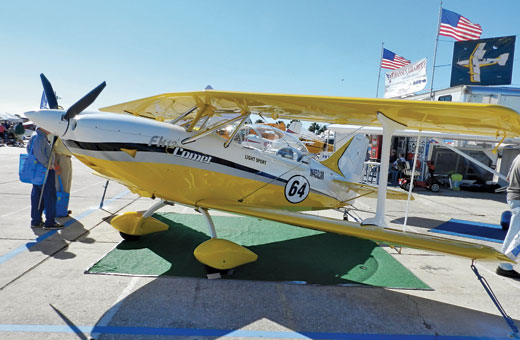
Hansen Air Group showed the FK-12 Comet biplane, powered by a Rotax 912S. A Lycoming IO-233-powered version is in the works.
LSA Weight Limits
EAA President Rod Hightower spoke at the LAMA (Light Aircraft Manufacturers Association) dinner on Thursday and it came to light that the EAA and the FAA are in the very early stages of discussing a maximum-gross weight increase for Light Sports. As an advocate of the idea, I’m delighted to hear this. I understand the idea of preliminary and the pace of the FAA, but let’s hope our letter groups and the Feds can get something working with all due haste. And I hope the EAA pushes for something worthwhile, like a 1600- or 1700-pound limit. If you ask for 1500, you might get 1400, and then nobody’s really all that happy.
Moreover, a small tweak to the rules is not what’s called for. I advocate a swift kick in the backside. Push hard for a rules change that will allow “legacy” aircraft like the Cessna 150/152 to be LSAs. I have had some spirited discussions about the effect of such a change, including a consistent strain of “you’ll kill the industry” if you allow the mighty Cessna into the mix.
Really? Is there something fishy in your Starbucks? I contend that the existing pilot who is “moving down” in his flying career—having sold his Baron to buy a Bonanza and now keen to get rid of the retractable Beech because his family is grown and gone—isn’t necessarily in the game for a $100,000-plus new LSA. Have you seen the resale value on older Bonanzas? You get my point.
Instead, he’d be perfectly happy plunking down a much more modest sum for a 152—heck, he’d be thrilled to have access to a 172—but is probably completely out of the game for a brand new composite smoothie at six figures. Keeping this pilot in the game is crucial for general aviation’s survival going forward. If he’s flying, even the now-standard 30 hours a year or less, he’s flying. He’s buying gas. He’s in the market for a new GPS and a headset now and again. He buys charts and feeds the vending machine at the FBO. Individually, small things. But leave this pilot out—force him to spend big for a new LSA to permit him to fly without a medical—and he’s gone. (AOPA’s and EAA’s push to have medical requirements dropped for certain non-commercial operations looks to be sidelined until a new FAA administrator can be found.)
Of course, there are dozens of comparatively inexpensive designs he could build as an Experimental/Amateur-Built and fly as a sans-medical Sport Pilot. That’s why we’re here. And in Sebring.

